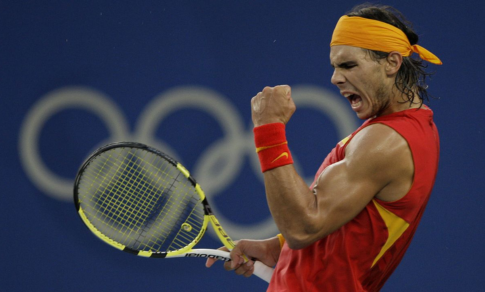Yesterday, tennis fans witnessed the end of an era as Rafael Nadal, the celebrated champion with 22 Grand Slam titles, officially announced his retirement at age 38. For over two decades, Nadal’s passion, resilience, and powerful play captivated audiences around the world, establishing him as one of the most influential figures in the sport. His career journey featured countless memorable matches, many of which defined his legacy and built one of the most iconic rivalries in sports.
Nadal's rivalry with Roger Federer began with an unassuming match in the third round of the Miami Open in 2004. The 17-year-old Nadal surprised Federer, then the top-ranked player, with a swift victory of 6-3, 6-3. This match not only introduced Nadal to the world stage but also marked the start of one of tennis’s greatest rivalries, with Nadal ultimately challenging Federer for the title of the world's best.
Three years after his 2014 Roland Garros victory, Nadal returned to his favorite tournament in 2017 after a period of injuries and missed finals. In a resounding comeback, he defeated Stan Wawrinka 6-1, 6-3, 6-2 in the French Open final, achieving a record tenth Roland Garros title – a feat that underscored his dominance on clay and solidified his place as the “King of Clay.”
In 2005, Nadal's impressive Grand Slam journey began when he won his first major at Roland Garros, defeating Argentina's Mariano Puerta. The 19-year-old sensation had already gained attention after 24 consecutive wins leading into the tournament. His victory in Paris confirmed his potential as he became only the second player in history to win Roland Garros on his debut, setting the stage for his historic career.
By 2010, Nadal was a powerhouse in tennis, completing a career Grand Slam at the US Open. He defeated Novak Djokovic in the final with a score of 6-4, 5-7, 6-4, 6-2, making him the youngest player to secure all four major titles. This achievement also put him in elite company, as he became the second male player to win a Golden Slam, following in the footsteps of Andre Agassi.

Nadal’s Olympic debut in 2008 brought further triumph, as he claimed gold in Beijing after defeating Fernando González in a dominant performance. This win not only earned him an Olympic title but also propelled him to the world’s No. 1 ranking, ending Roger Federer’s record-breaking streak of 237 consecutive weeks at the top.
The 2019 Davis Cup final was another highlight, with Nadal leading Spain to victory over Canada. His win over Denis Shapovalov in the finals helped secure Spain’s sixth Davis Cup title, and Nadal was awarded MVP honors for his outstanding performance. His dedication and success in this team event reflected his enduring commitment to representing his country on the world stage.
Nadal’s rivalry with Federer reached its peak at the 2008 Roland Garros final, where he overwhelmed Federer with a decisive 6-1, 6-3, 6-0 victory. This one-sided match was one of the most lopsided Grand Slam finals in history and emphasized Nadal’s clay-court superiority over his Swiss counterpart, with whom he shared an intense career rivalry.
In 2009, Nadal once again faced Federer in a high-stakes Australian Open final. After a grueling five-set victory over Fernando Verdasco, Nadal managed to outlast Federer in another five-set thriller, 7-5, 3-6, 7-6, 3-6, 6-2. Federer was moved to tears in the aftermath, and Nadal’s physical endurance and mental fortitude were widely praised, marking one of the most memorable moments of his career.
Finally, in what many consider the greatest tennis match ever, Nadal defeated Federer at the 2008 Wimbledon final in a five-set battle that lasted 4 hours and 48 minutes. After multiple rain delays and a near-comeback by Federer, Nadal triumphed with a 9-7 score in the fifth set, claiming his first Wimbledon title. This iconic victory on grass proved Nadal’s versatility and solidified his legacy beyond clay courts, leaving an indelible mark on tennis history.









ADD A COMMENT :